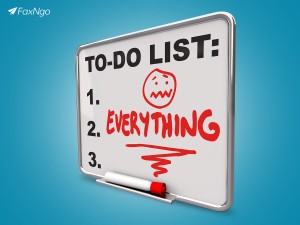Here are three processes essential for succeeding with CJO.
This is the second article in a three-part series. The first part can be found here.
If you are considering implementing customer journey orchestration (CJO), then you most likely already know some of its benefits.
These include providing more and better opportunities to coordinate how a customer sees offers across channels and guiding that customer toward a conversion opportunity. However, the multi-channel marketing approach CJO utilizes also means that things can get more complicated.
In this second part of this three-part series, we’ll explore three critical processes that organizations successful with customer journey orchestration excel at.
Content creation for journey orchestration
Let’s start by talking about content. After all, without content, there would be nothing to orchestrate.
The main issue is how to maintain content consistency across channels. While your creation and management might currently be siloed, CJO will require closer coordination. Think about how many different systems are used to create, manage and publish content. From a process standpoint, how does a required change to content get propagated across all of the channels you will be orchestrating?
To start, using a journey map, follow the content creation process across teams and platforms to get a better understanding of where and how you can start standardizing content creation and creating efficiencies.
Understanding how you will maintain consistency — as well as the areas where content is needed — will help you have a successful customer journey orchestration implementation.
A taxonomy for CJO
Now that we’ve discussed the creation and management of content, let’s talk about how we’re going to organize and keep track of it all. For this, we will need to create a customer journey taxonomy.
In this case, a taxonomy is a common set of categories (often in a hierarchy) that all content uses in order to understand the journeys, campaigns, products and services, channels, audience segments and desired actions they are associated with.
To do this, consider the following:
- What information will the different platforms involved in CJO need to “know” about content in order to serve the correct content at the right time in a journey?
- What common terms would be helpful for your teams to understand in order to create, manage and track content?
- How can taxonomy benefit reporting and feedback loops?
To get started, begin to define common terms and categories that common systems will need to understand and use throughout the CJO process. This is another area where mapping the customer journey from a platform and system perspective can help.
Creating this customer journey taxonomy, or a common naming, categorization and tagging methodology, will keep your team members aligned and it will streamline the creation, management and tracking of your customer journeys.
Agile, continuous improvement
The last thing we’re going to discuss relates to continuously improving customer journeys and the implementation of our CJO. After all, the best approach is to start small with a limited set of journeys and integrations and grow them over time, learning as you go.
While you may not have formally adopted Agile practices like Scrum or Kanban, it’s never too late to find ways of enabling your teams to be nimbler. Ask yourself the following:
- Does the way you plan projects allow you to be prepared for unforeseen changes and opportunities?
- Do all team members understand the goals and business value customer journey orchestration will allow?
- Are other teams in your organization implementing Agile or other methods?
- How robust are your feedback loops so that you can continuously improve your efforts?
To get started, agree on an approach that will work best for your team. Start small and iterate and grow as you find success, as well as areas for improvement. Align with other teams and the way they work when possible. Finally, even though change is difficult, commit to the process to see it through!
Embracing an Agile approach to continuous improvement means that your CJO efforts can start with something as small as a proof of concept and iteratively grow in scope and sophistication over time. This allows your organization to learn as you go, saving costly mistakes and benefiting your customer all along the way.
Conclusion
CJO often requires rethinking processes that currently exist and will often require brand new processes and ways of working. Keeping these things in mind as you are planning will enable the greatest initial success and help you anticipate challenges down the road.
In the next article, I’m going to discuss the platforms that enable successful customer journey orchestration.
The post How customer journey orchestration affects process: Getting started on CJO appeared first on MarTech.
MarTech(16)






